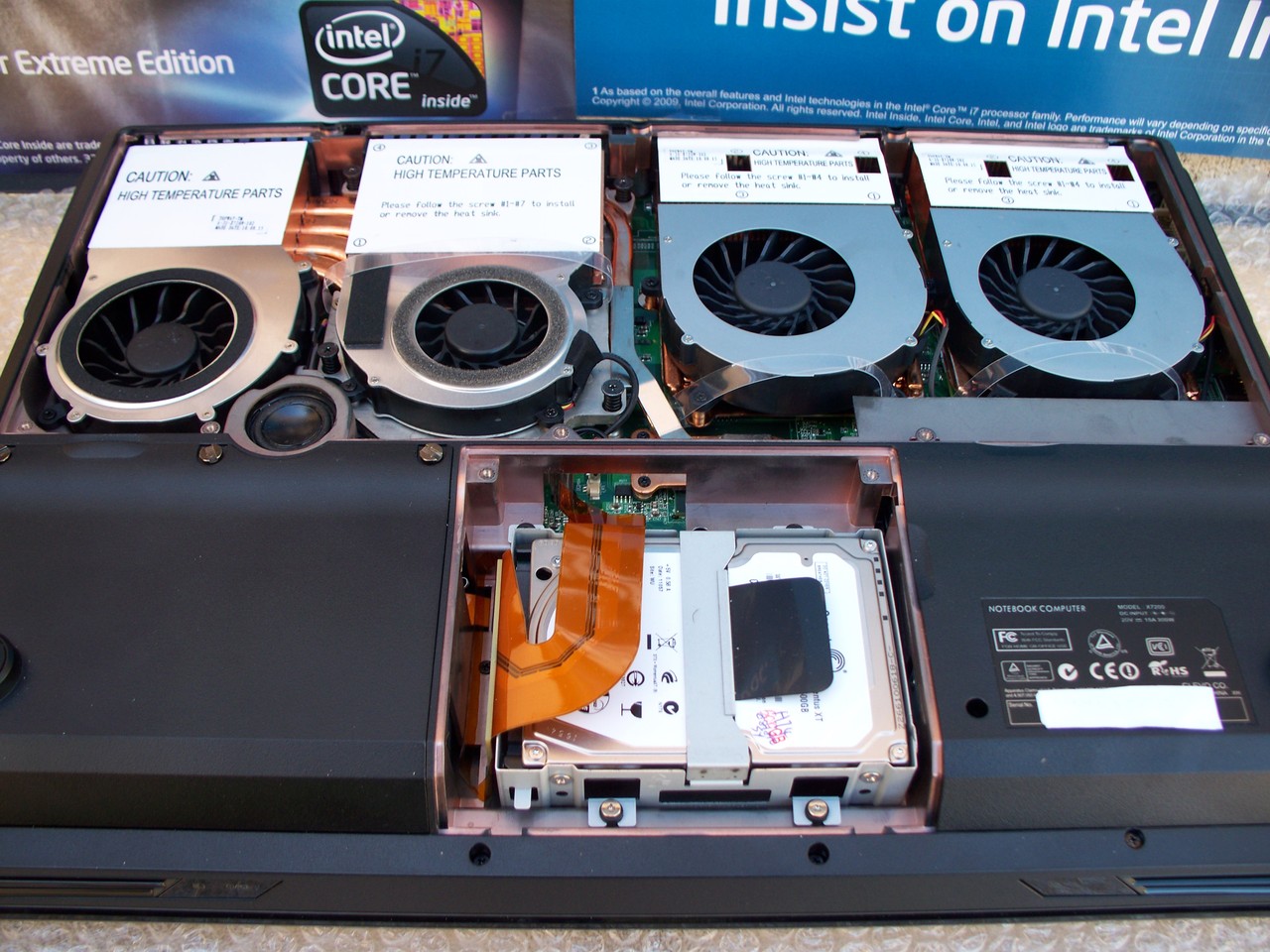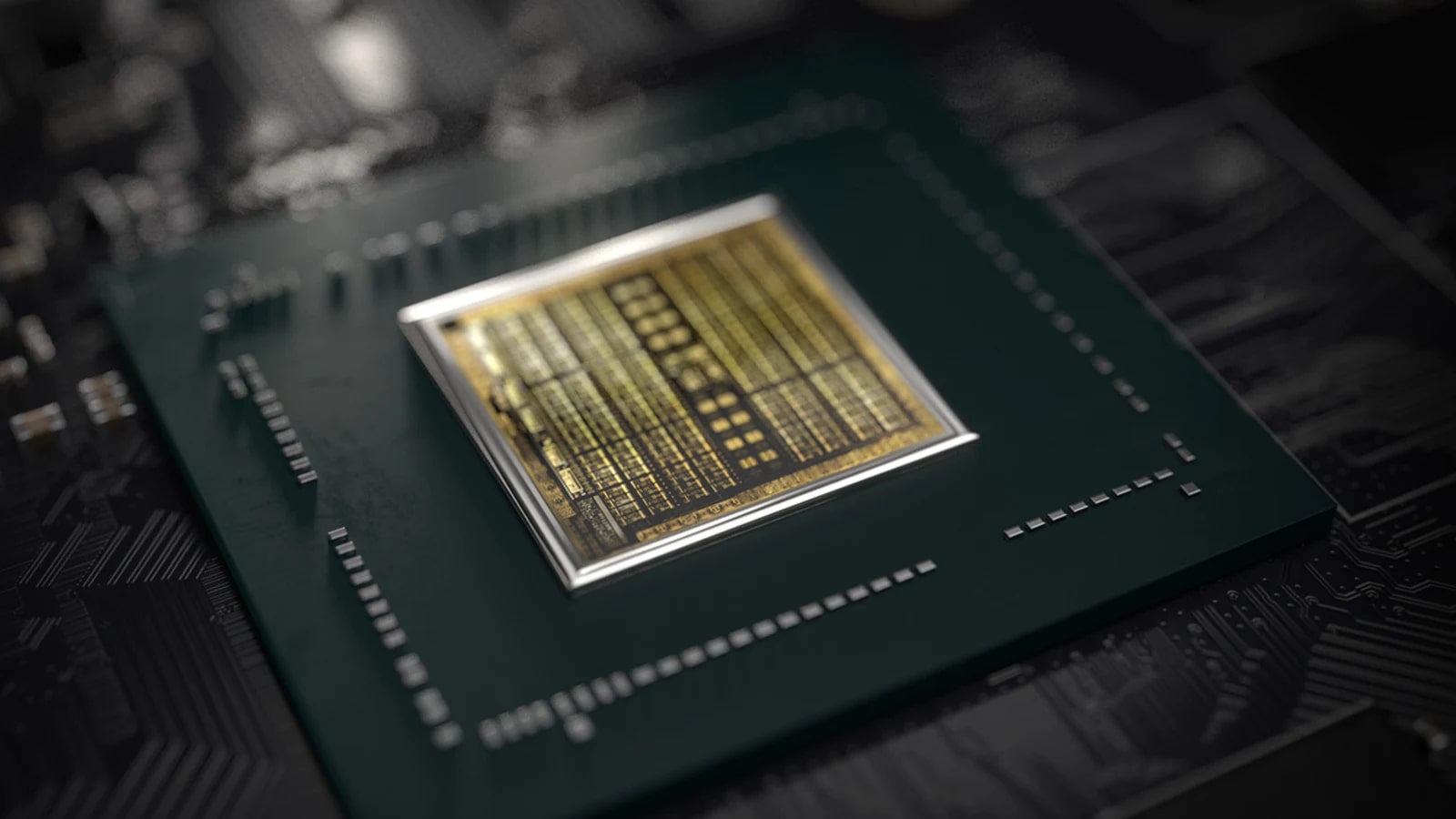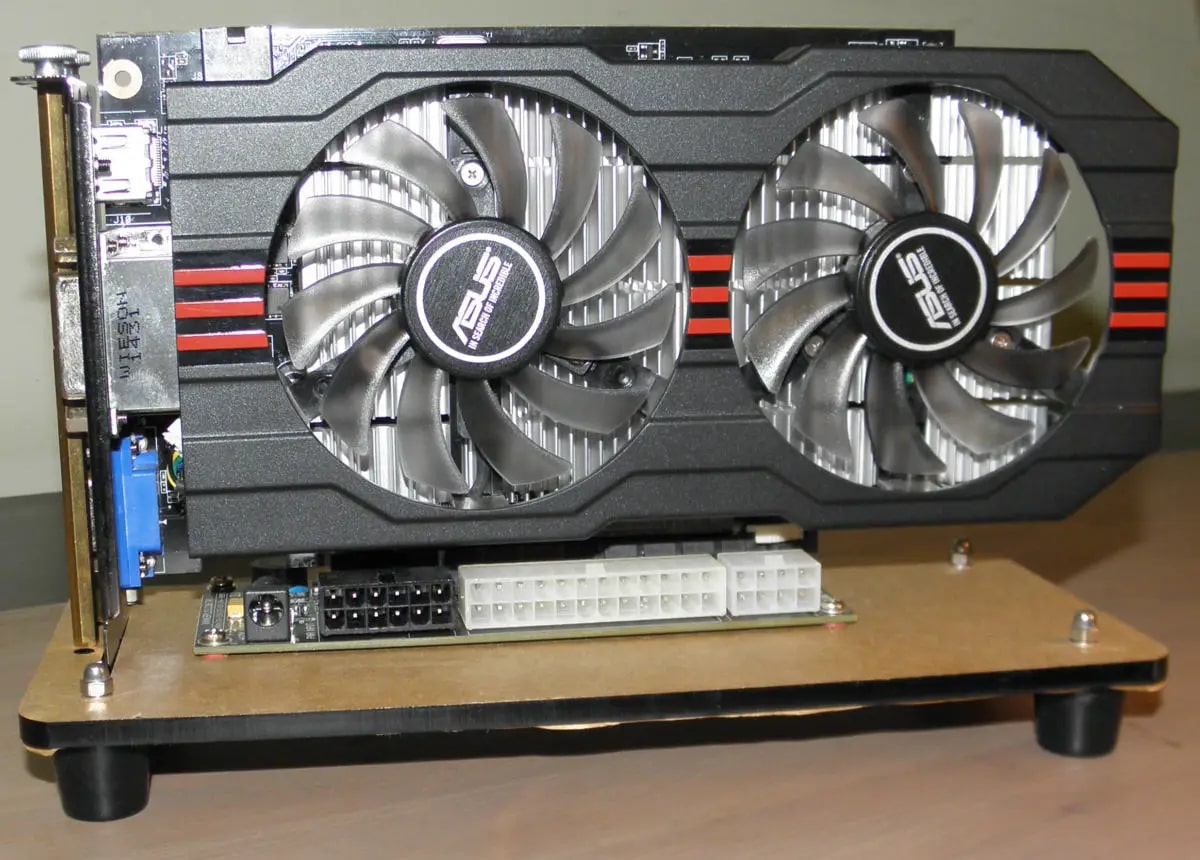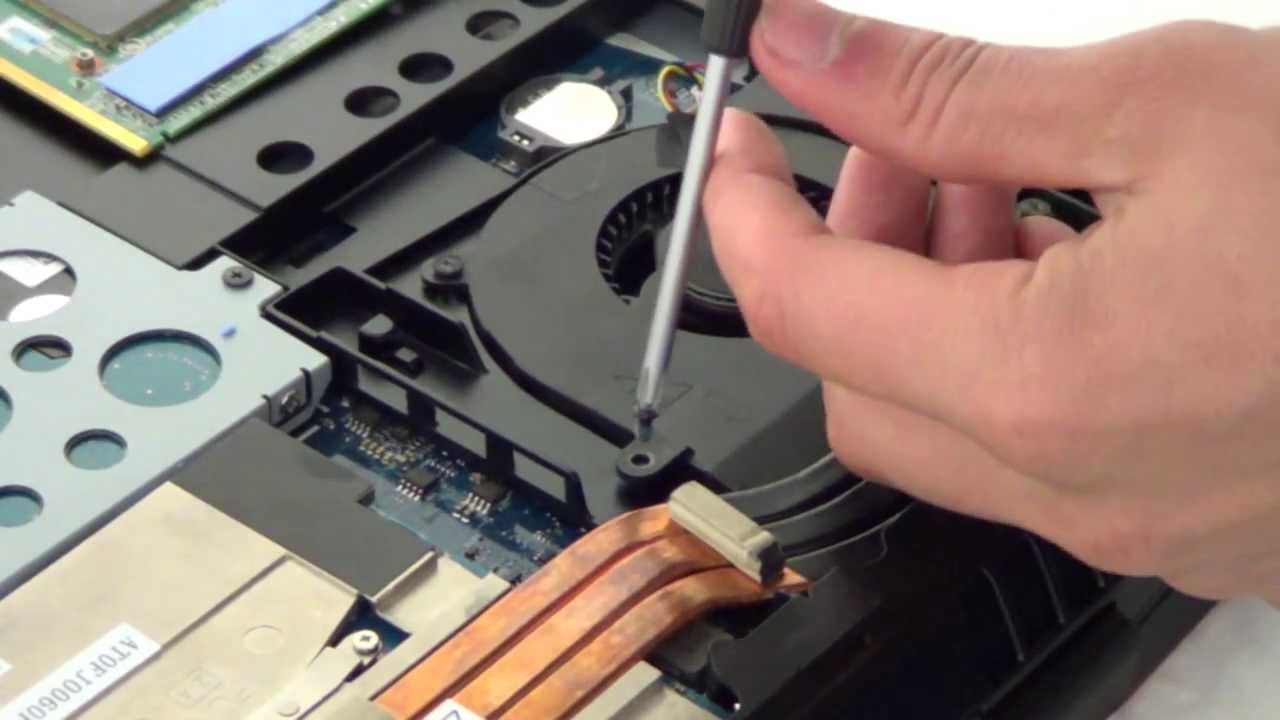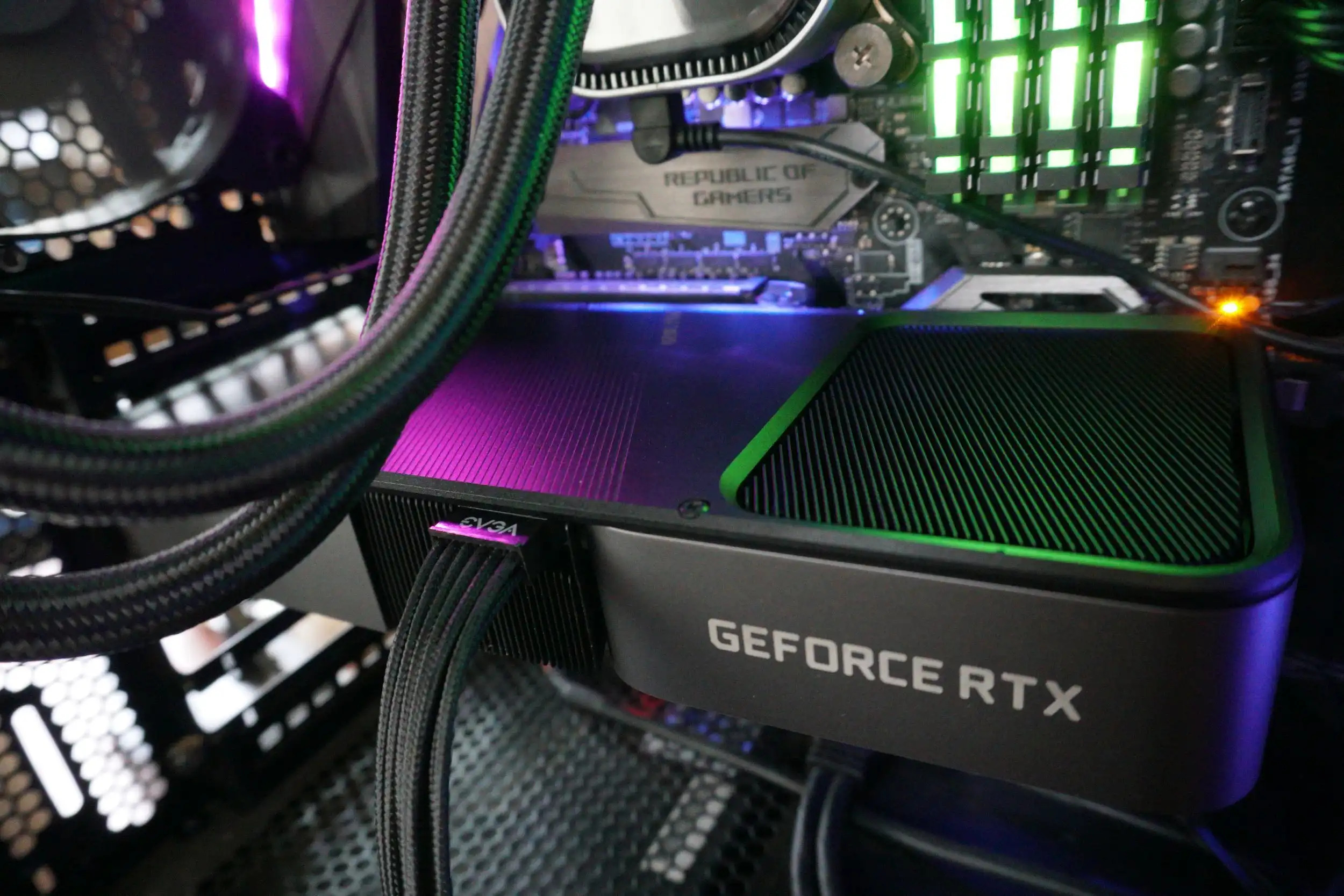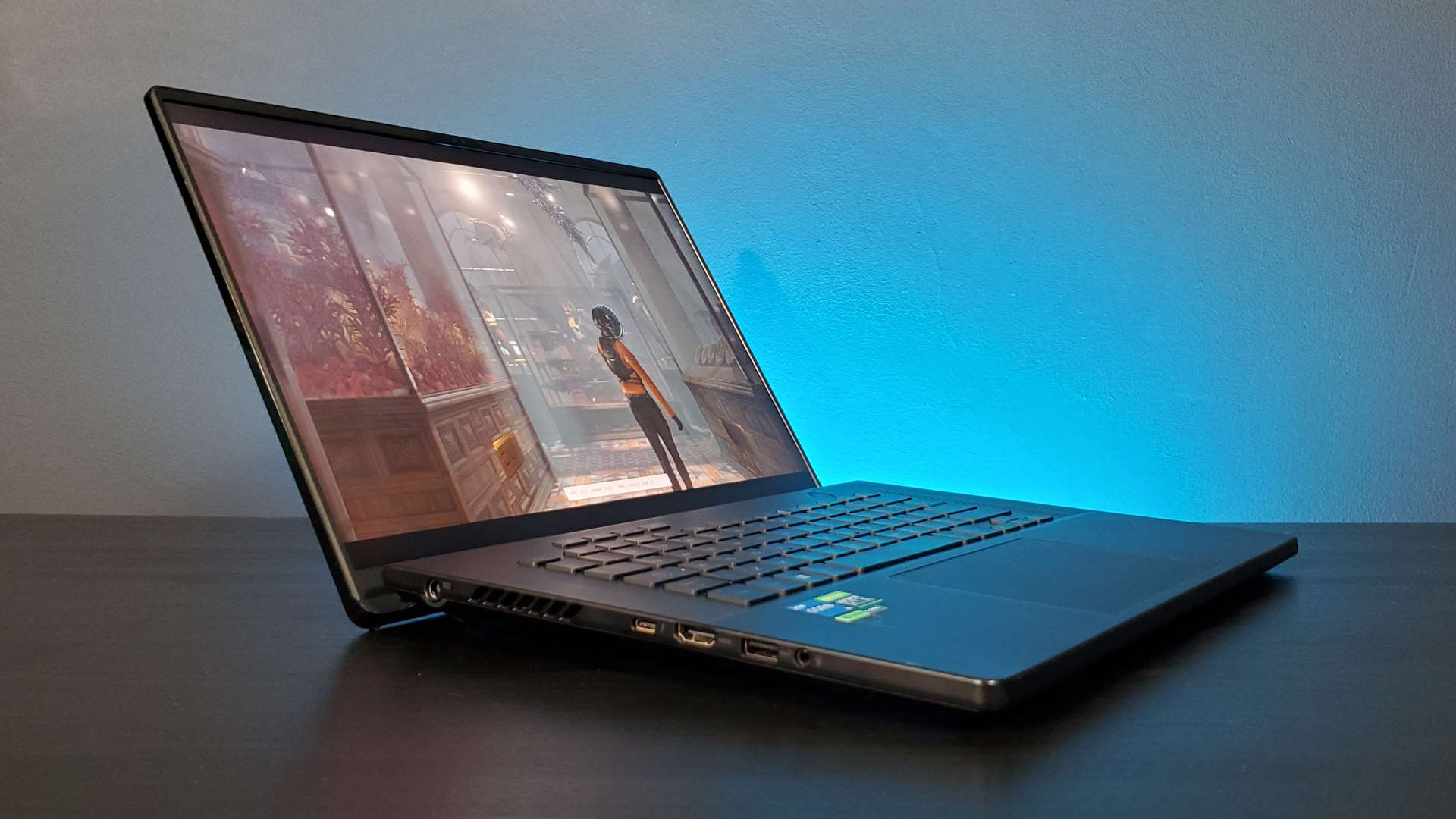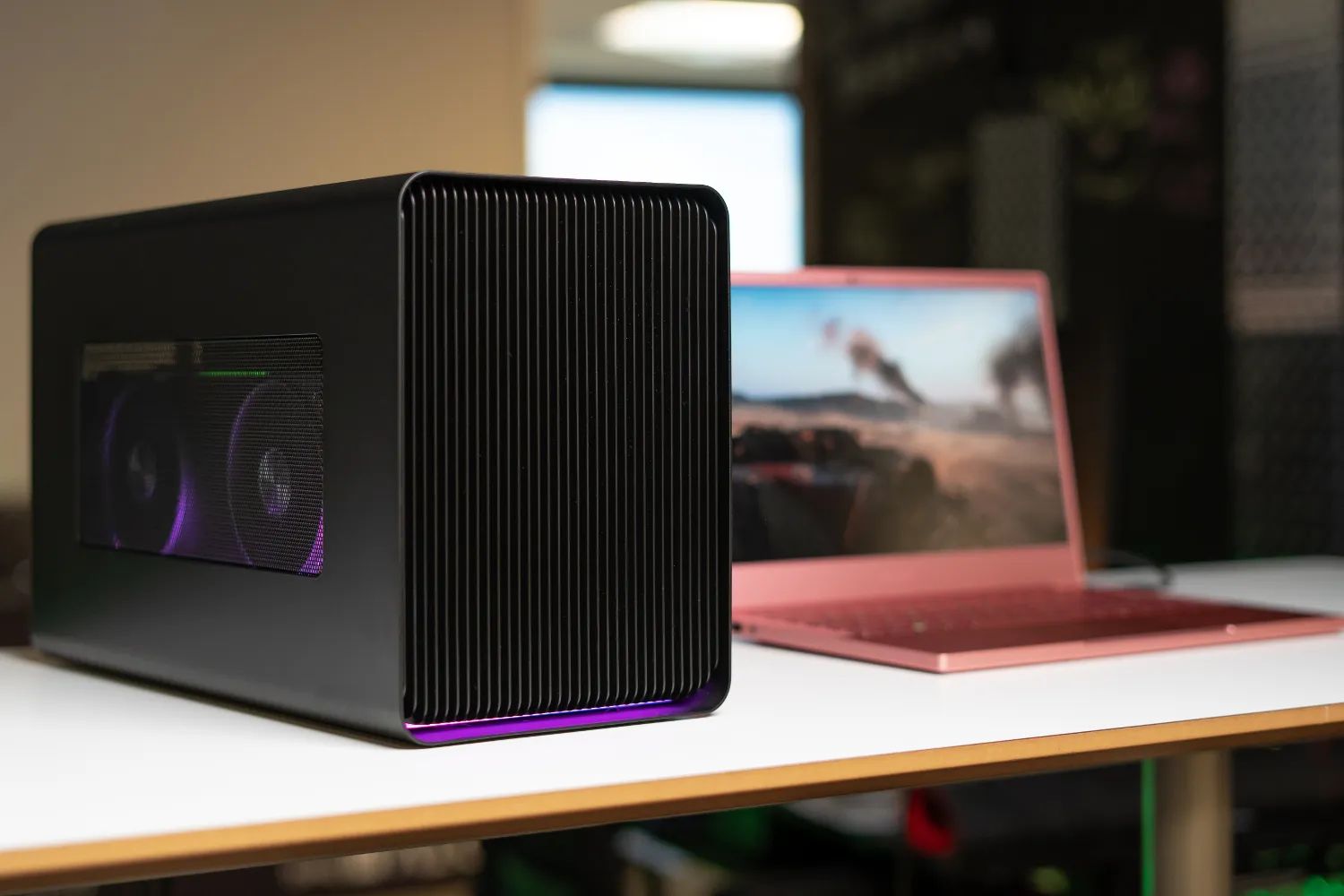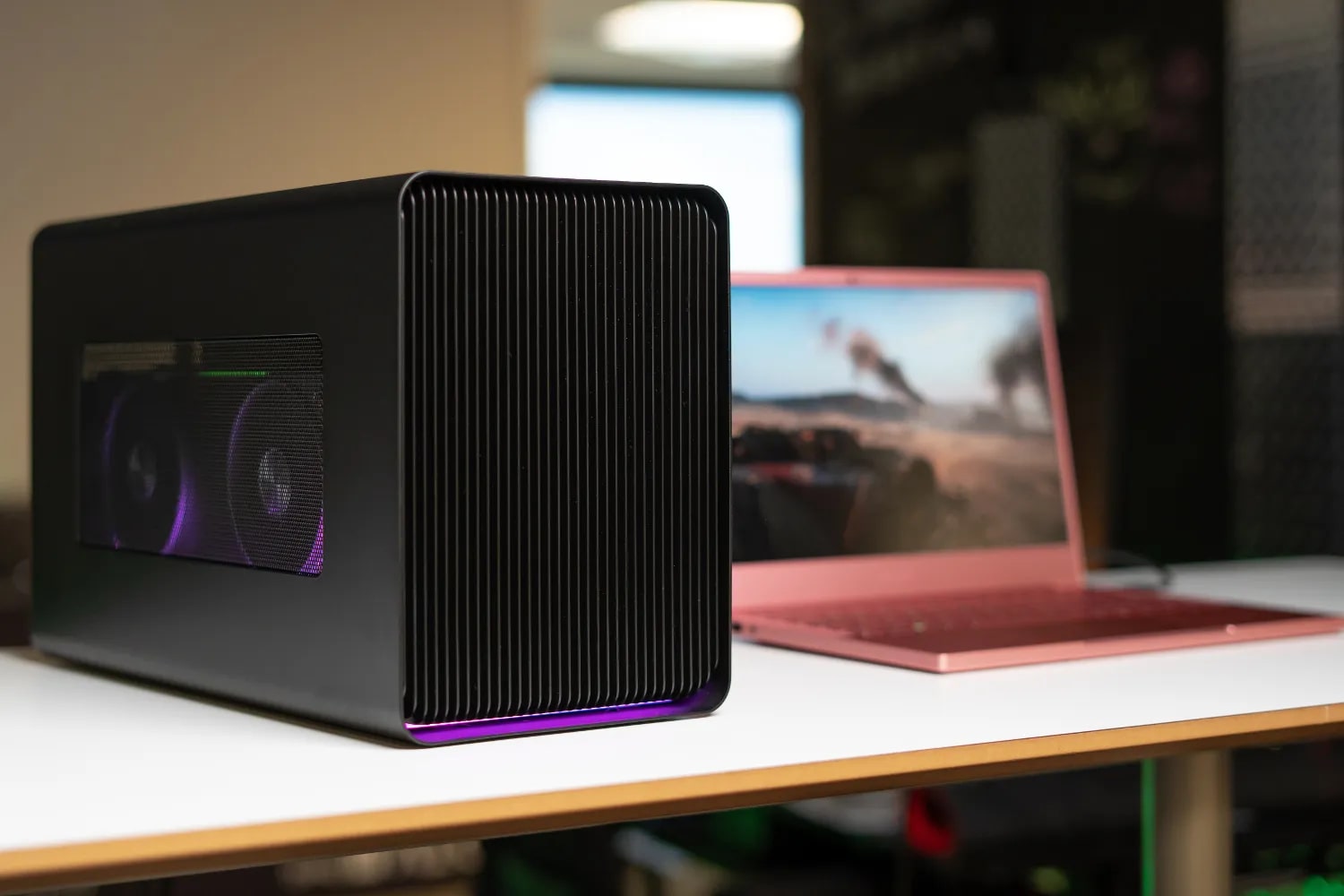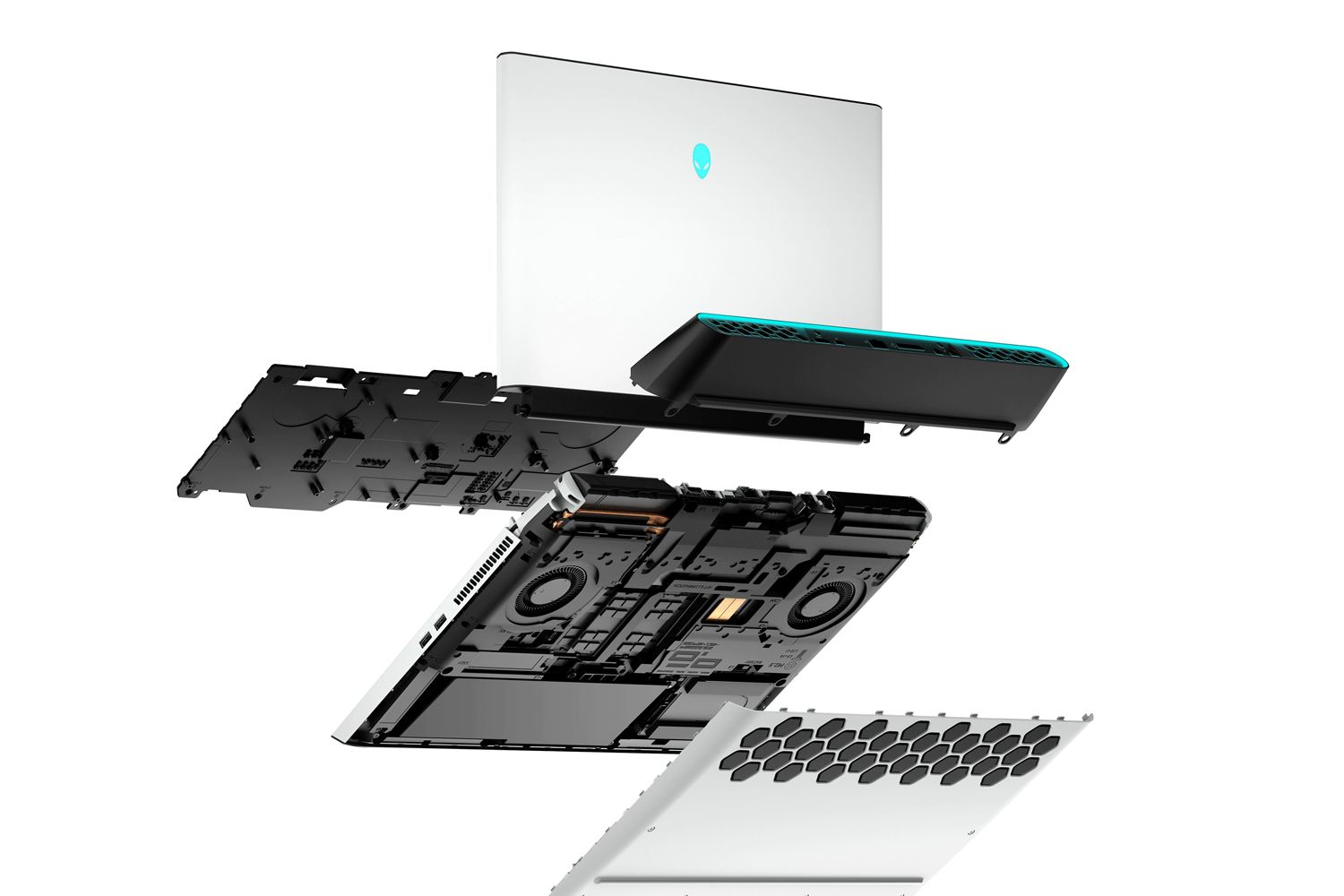Introduction
Welcome to our guide on laptop graphics cards! Whether you’re a gaming enthusiast, a creative professional, or simply someone who wants smooth and visually stunning visuals on your laptop, understanding graphics cards is crucial. These powerful components play a vital role in determining the visual quality and performance of your laptop.
A graphics card, also known as a video card or a GPU (Graphics Processing Unit), is an essential component of a laptop that handles the processing and rendering of images, videos, and 3D graphics. It works in conjunction with the laptop’s CPU (Central Processing Unit) to provide smooth graphics and enhance overall performance.
Graphics cards are particularly important in laptops because they directly impact the quality of visuals displayed on the screen. Whether you’re playing graphically demanding games, editing high-resolution videos, or running complex visual modeling software, a capable graphics card is essential for a seamless and immersive experience.
There are two main types of graphics cards: integrated and dedicated. Integrated graphics cards are built into the laptop’s motherboard and share system memory, while dedicated graphics cards have their own dedicated memory and are more powerful.
In this guide, we will delve into the world of laptop graphics cards, exploring how they work, the different types available, and the factors to consider when choosing one. We will also touch upon the possibility of upgrading your laptop’s graphics card to enhance its performance.
So, whether you’re a casual user or a hardcore gamer, this guide will equip you with the knowledge to make informed decisions about laptop graphics cards and help you find the perfect match for your specific needs.
What Is a Graphics Card?
A graphics card, also known as a video card or GPU (Graphics Processing Unit), is a crucial hardware component in a computer or laptop that is responsible for rendering and displaying images, videos, and 3D graphics on the screen. It works hand in hand with the CPU (Central Processing Unit) to ensure smooth and high-quality visuals.
At its core, a graphics card contains a processor specifically designed for handling the complex calculations required for graphics rendering. This processor consists of thousands of small processing cores, each capable of performing multiple calculations simultaneously. These cores work together to process and manipulate the data necessary to generate images and animations.
One of the key components of a graphics card is its dedicated memory, known as VRAM (Video Random Access Memory). VRAM is used to store and access the large amounts of data required for rendering visuals. The higher the VRAM capacity, the more data the graphics card can store, resulting in smoother and more detailed graphics.
Graphics cards also contain specialized programming instructions, called shaders, which determine how the visual effects and textures are rendered. Shaders can be customized and optimized for different types of graphics, allowing for realistic lighting, shading, and other visual enhancements.
In addition to rendering graphics, graphics cards are also responsible for other computationally intensive tasks like video encoding, decoding, and physics simulations. They offload these tasks from the CPU, allowing it to focus on other system operations and improving overall system performance.
Modern graphics cards are equipped with various technologies and features to enhance graphic performance. These include support for multiple displays, high-definition video playback, and advanced rendering techniques like ray tracing and virtual reality (VR) support.
Overall, a graphics card is an essential component for any computer or laptop that requires powerful and visually stunning graphics. From gaming and multimedia editing to professional design and modeling, a capable graphics card elevates the visual experience and enhances the overall performance of the system.
Why Is a Graphics Card Important in a Laptop?
A graphics card plays a crucial role in a laptop, especially when it comes to delivering high-quality visuals and ensuring smooth graphics performance. Here are several reasons why a graphics card is important in a laptop:
1. Enhanced Gaming Experience: For gamers, a powerful graphics card is essential to achieve high frame rates, detailed textures, and realistic lighting effects. A dedicated gaming graphics card can handle the demanding requirements of modern games, providing a smooth and immersive gaming experience.
2. Multimedia Editing: Whether you’re editing videos, working on graphic design projects, or creating 3D models, a capable graphics card is vital. It accelerates rendering processes, improves visual effects, and reduces editing and rendering times, allowing for efficient and seamless multimedia editing workflows.
3. Smooth Video Playback: A graphics card with hardware acceleration capabilities ensures smooth video playback, especially for high-definition and 4K content. It offloads the video decoding process from the CPU, resulting in seamless playback without stuttering or dropped frames.
4. VR and AR Applications: Virtual reality (VR) and augmented reality (AR) applications require powerful graphics processing to deliver immersive experiences. A laptop with a high-performance graphics card can handle the intensive rendering requirements of VR and AR, providing a realistic and interactive environment.
5. Multi-Monitor Support: Graphics cards enable laptops to connect to multiple external monitors, expanding the display area for enhanced productivity. This is particularly useful for professionals who require multiple screens for multitasking, such as video editors, designers, and traders.
6. CAD and 3D Modeling: Architects, engineers, and 3D artists rely on powerful graphics cards to handle computationally demanding tasks involved in CAD (Computer-Aided Design) and 3D modeling. A capable graphics card enables smooth navigation, rendering, and visualization of complex 3D models.
7. Gaming Portability: For gamers who prefer the convenience of gaming on the go, a laptop with a dedicated graphics card provides the perfect solution. It allows them to enjoy their favorite games without compromising on graphics quality and performance while being portable enough to carry around.
In summary, a graphics card is essential in a laptop for enhancing gaming experiences, enabling efficient multimedia editing, ensuring smooth video playback, supporting VR and AR applications, providing multi-monitor support, and handling CAD and 3D modeling tasks. By investing in a laptop with a capable graphics card, users can unlock the full potential of their visual content and enjoy a superior computing experience.
Integrated vs. Dedicated Graphics Cards
When it comes to laptop graphics cards, there are two main types: integrated graphics cards and dedicated graphics cards. Each type has its own advantages and considerations. Let’s take a closer look at the differences between them:
Integrated Graphics Cards
Integrated graphics cards, also known as onboard graphics, are built into the laptop’s motherboard. They rely on the laptop’s main system memory (RAM) for storing and accessing data. Integrated graphics cards are typically more energy-efficient and cost-effective compared to dedicated graphics cards. They work well for general computing tasks, such as browsing the web, word processing, and watching videos.
However, integrated graphics cards are not as powerful as dedicated graphics cards when it comes to handling graphically demanding applications, such as gaming, 3D modeling, and video editing. They share system resources with the CPU, which can lead to reduced performance in graphics-intensive tasks. The limited VRAM in integrated graphics cards also impacts their ability to render complex visuals with high detail.
Dedicated Graphics Cards
Dedicated graphics cards, also known as discrete graphics cards, have their own dedicated memory (VRAM) and processing power. They are separate components that are more powerful and efficient in handling graphics-intensive tasks. Dedicated graphics cards are designed specifically for gaming, multimedia editing, CAD, and other graphically demanding applications.
Compared to integrated graphics cards, dedicated graphics cards deliver higher frame rates, better visual effects, and smoother performance when running graphically demanding games or applications. They are capable of rendering realistic lighting, shadows, and textures, providing a more immersive and visually stunning experience.
However, dedicated graphics cards consume more power and generate more heat compared to integrated graphics cards. This can impact battery life and contribute to laptops being bulkier and heavier. Additionally, laptops with dedicated graphics cards tend to be more expensive than those with integrated graphics.
Hybrid Graphics Technology
Some laptops feature hybrid graphics technology, which combines both integrated and dedicated graphics cards. This technology intelligently switches between the two graphics cards based on the task at hand. Integrated graphics are used for less demanding tasks to conserve power, while the dedicated graphics card is utilized for more demanding applications. This allows for a balance between performance and power efficiency.
It’s worth noting that not all laptops support upgrading or adding a dedicated graphics card. For those who require the power and performance of a dedicated graphics card, it’s important to carefully research and select a laptop that offers this capability.
In summary, integrated graphics cards are suitable for everyday tasks and provide energy efficiency, while dedicated graphics cards are essential for gaming, multimedia editing, and other graphically demanding applications. Hybrid graphics technology combines the advantages of both types, allowing for a balance between performance and power efficiency. Choosing between integrated and dedicated graphics cards depends on your specific needs and usage requirements.
How Does a Graphics Card Work?
A graphics card, also known as a GPU (Graphics Processing Unit), works in conjunction with a computer’s CPU (Central Processing Unit) to handle the complex calculations required for rendering and displaying graphics. Understanding how a graphics card works can shed light on its role in powering visually stunning and smooth graphics on a computer.
At its core, a graphics card consists of a processor with thousands of small processing cores. These cores are specifically designed to handle parallel calculations required for graphics processing. They work together to perform tasks like vertex processing, rasterization, and pixel shading, which are essential for generating images and animations.
When a computer runs a game or a graphics-intensive application, the CPU sends instructions and data to the graphics card. These instructions are processed by the graphics card’s processor, which then performs calculations to determine the colors, positions, and textures of the pixels on the screen.
One of the key components of a graphics card is its dedicated memory, known as VRAM (Video Random Access Memory). VRAM stores the data required for rendering visuals, such as textures, vertex information, and frame buffers. This dedicated memory allows the graphics card to access the necessary data quickly, reducing the need for accessing the computer’s main system memory (RAM).
Graphics cards also use specialized programming instructions called shaders. Shaders are small programs that control how different parts of a scene are rendered and displayed. They handle tasks like lighting, shading, and effects, giving graphics their realistic appearance. Different types of shaders, including vertex shaders and pixel shaders, work together to create stunning visuals.
As the graphics card processes the data and performs calculations, it sends the results back to the CPU, which then sends the final information to the monitor for display. The graphics card continuously updates the screen with new information, producing a smooth and real-time visual experience.
Modern graphics cards also come equipped with advanced features and technologies to enhance graphics performance. These include hardware acceleration for video decoding and encoding, support for high-definition and 4K displays, and technologies like ray tracing for realistic lighting and reflections.
The performance of a graphics card can be measured by its clock speed, the number of processing cores, and the amount of VRAM it has. Higher clock speeds and more cores allow for faster calculations and smoother graphics rendering. Increased VRAM capacity enables the graphics card to handle larger and more detailed textures, resulting in higher-quality visuals.
In summary, a graphics card works alongside the CPU to process and render graphics on a computer. It consists of a specialized processor, dedicated memory (VRAM), and programming instructions (shaders) to perform complex calculations and generate visually stunning images and animations. Understanding how a graphics card works helps in appreciating its role in delivering smooth and immersive graphics experiences.
Types of Laptop Graphics Cards
When it comes to laptop graphics cards, there are several different types available, each offering varying levels of performance and capabilities. Understanding the different types can help you make an informed decision when choosing a laptop that suits your specific needs and requirements. Let’s explore the most common types of laptop graphics cards:
Integrated Graphics Cards
Integrated graphics cards, also known as onboard graphics, are built into the laptop’s motherboard. They utilize the system’s RAM (Random Access Memory) for storing and accessing data. Integrated graphics are typically found in entry-level laptops and are suitable for everyday tasks like web browsing, word processing, and media consumption. However, they may struggle to deliver smooth graphics performance in demanding tasks such as gaming or graphics-intensive applications.
Dedicated Graphics Cards
Dedicated graphics cards, also called discrete graphics cards, have their own dedicated GPU (Graphics Processing Unit) and VRAM (Video Random Access Memory). These cards are more powerful and designed to handle graphically demanding tasks such as gaming, multimedia editing, and 3D modeling. Dedicated graphics cards provide smoother gameplay, higher frame rates, and improved visuals compared to integrated graphics. They come in various models and specifications, ranging from low-end options to high-end gaming GPUs.
Mobile Graphics Cards
Mobile graphics cards, also known as mobile GPUs, are specially designed for laptops and have lower power requirements compared to their desktop counterparts. They are optimized for efficient performance and better power management, allowing for longer battery life in laptops. Mobile graphics cards come in different tiers, ranging from entry-level cards for basic tasks to high-performance options for gaming and professional applications.
External Graphics Cards
External graphics cards, or eGPUs, are relatively new to the market. They connect to a laptop through a Thunderbolt or USB-C interface, providing a way to add or upgrade the graphics capabilities of a laptop. This allows users to connect a more powerful desktop-grade GPU to their laptop, transforming it into a gaming or graphics powerhouse when needed. External graphics cards are particularly appealing to gamers and creative professionals seeking greater performance without sacrificing portability.
Workstation Graphics Cards
Workstation graphics cards are designed for professional applications that require high compute power and reliability. They are used in industries such as computer-aided design (CAD), video editing, and 3D rendering. Workstation graphics cards offer optimized performance for these demanding tasks, often featuring specialized drivers and support for professional software. They may also come with additional features like error correction, double precision floating-point calculations, and larger VRAM capacities.
It’s important to note that while desktop graphics cards are generally more powerful than their mobile counterparts, laptop graphics card technology has improved significantly in recent years. High-end gaming laptops and workstation laptops now offer impressive performance that rivals some desktop configurations.
When selecting a laptop, consider your specific needs and usage requirements. If gaming or demanding graphics tasks are a priority, opt for a laptop with a dedicated graphics card. On the other hand, if your usage mainly involves casual everyday tasks, an integrated graphics card may be sufficient.
In summary, the types of laptop graphics cards include integrated graphics cards, dedicated graphics cards, mobile graphics cards, external graphics cards, and workstation graphics cards. Each type offers varying levels of performance and capabilities to suit different usage scenarios. Understanding these types can help you choose a laptop that meets your specific graphics needs and delivers the desired performance.
Factors to Consider When Choosing a Laptop Graphics Card
When selecting a laptop, the graphics card is a crucial component to consider, especially if you have specific needs like gaming, multimedia editing, or 3D modeling. Here are some key factors to consider when choosing a laptop graphics card:
Performance
The performance of a graphics card directly impacts the quality of graphics and the smoothness of gameplay or rendering. Look for a graphics card with a higher GPU clock speed and more processing cores for better performance. The amount of VRAM is also important, as it determines the card’s ability to handle large textures or multiple displays. Check benchmarks and reviews to gauge the card’s performance in real-world scenarios.
Compatibility
Make sure the graphics card is compatible with the laptop model you’re interested in. Some laptops allow for GPU upgrades or customization, while others have fixed configurations. Research the specifications and options available for the laptop to ensure compatibility with your desired graphics card.
Power Consumption
A high-performance graphics card tends to consume more power, leading to reduced battery life in laptops. Consider your usage patterns and whether you need to prioritize portability or performance. Look for laptops with efficient power management features or switchable graphics options to balance between performance and battery life.
Heat Dissipation
Graphics cards generate heat during intense usage. Ensure that the laptop has adequate cooling mechanisms to dissipate heat effectively. Look for laptops with good thermal design, such as multiple heat pipes and efficient fans, to prevent overheating and maintain optimal performance.
Connectivity and Display Outputs
If you plan to use external displays or connect to other peripherals, consider the connectivity options offered by the graphics card. Look for laptops with multiple display outputs, such as HDMI, DisplayPort, or USB-C, to accommodate your display setup requirements.
Software and Drivers Support
Ensure that the graphics card is supported by the operating system and the software applications you intend to use. Some professional software may require specific certifications or optimized drivers for optimal performance. Check the manufacturer’s website for driver updates and software compatibility information.
Budget and Pricing
Graphics cards vary in price depending on their performance levels. Set a budget and prioritize your needs to find the right balance between performance and affordability. Compare prices and specifications across different laptop models to make an informed decision.
Consider these factors in conjunction with your usage requirements to select a laptop with the graphics card that best meets your needs. Whether you prioritize gaming performance, graphics-intensive tasks, or a balance between portability and power, an informed decision will ensure that you have a laptop equipped with a suitable graphics card for a seamless and immersive computing experience.
Upgrading Laptop Graphics Cards
One common question that arises when it comes to laptop graphics cards is whether it is possible to upgrade them. Unlike desktop computers, which often allow for easy graphics card upgrades, upgrading laptop graphics cards can be a more challenging task. Here are some key considerations when it comes to upgrading the graphics card in a laptop:
Hardware Limitations
Laptops are designed with specific hardware configurations and limitations, including the compatibility of components. In most cases, the graphics card in a laptop is integrated into the motherboard and cannot be replaced or upgraded separately. This is due to differences in form factors, power requirements, and cooling solutions among different laptop models. Before considering an upgrade, check the laptop’s specifications and consult the manufacturer’s documentation to understand the limitations and compatibility of components.
Compatibility and Modification
Even if a laptop allows for graphics card upgrades, compatibility can still be an issue. Laptops often have certain slots or connectors designed for specific GPU models or series. It is crucial to ensure that the new graphics card is compatible with the laptop’s form factor, power delivery, and cooling system. Additionally, physically installing a new graphics card in a laptop may require expertise and modification, as laptop components are typically tightly packed and integrated.
Warranty and Support
Upgrading a laptop’s graphics card may void the manufacturer’s warranty. Modifying a laptop’s internal components can be seen as tampering and may lead to warranty limitations or even invalidation. Before attempting to upgrade, carefully consider the warranty implications and whether you are comfortable with the potential risks involved. It is essential to consult the laptop manufacturer or authorized service centers for guidance and support.
Alternative Solutions
If upgrading the graphics card is not feasible or recommended for your laptop, there are alternative solutions available. External graphics card enclosures, such as eGPUs, provide a way to enhance graphics performance by connecting a dedicated GPU externally. These enclosures typically connect to the laptop through Thunderbolt or USB-C ports and offer more flexibility in terms of GPU selection and upgrades. eGPUs can provide a significant boost in performance for gaming, graphics-intensive tasks, and VR applications.
Before investing in an eGPU or any other external graphics solution, make sure to research compatibility with your laptop model and the additional requirements, such as power supplies and connection bandwidth. Some laptops may offer official support for eGPU configurations, while others may require third-party software or modifications to enable external GPU functionality.
In summary, upgrading the graphics card in a laptop can be challenging due to hardware limitations, compatibility issues, and warranty implications. It is advisable to research the laptop’s specifications, seek guidance from the manufacturer or authorized service centers, and consider alternative solutions like external graphics card enclosures if a graphics upgrade is necessary.
Conclusion
Laptop graphics cards play a significant role in delivering high-quality visuals and smooth performance for various tasks, ranging from gaming and multimedia editing to professional design and modeling. Understanding the different types of graphics cards, the factors to consider when choosing one, and the limitations and possibilities of upgrading them can help you make informed decisions when selecting a laptop.
Integrated graphics cards are suitable for everyday tasks and provide energy efficiency, while dedicated graphics cards offer the power and performance required for gaming and graphics-intensive applications. Hybrid graphics technology provides a balance between performance and power efficiency by intelligently switching between integrated and dedicated graphics depending on the task at hand.
When choosing a laptop graphics card, numerous factors come into play. Performance, compatibility, power consumption, heat dissipation, connectivity options, software support, and budget considerations all need to be taken into account. It is essential to balance the specific needs of your intended usage with the available options to find the right laptop and graphics card combination that suits your requirements.
While upgrading laptop graphics cards can be challenging due to hardware limitations, compatibility issues, and warranty implications, external graphics card enclosures offer an alternative solution for boosting graphics performance. eGPUs provide the flexibility to connect a dedicated graphics card externally, offering significant performance enhancements for gaming, VR applications, and graphics-intensive tasks.
Ultimately, the choice of laptop graphics card depends on your desires and requirements. Whether you seek gaming excellence, multimedia editing capabilities, or productivity enhancements, selecting a laptop with the right graphics card will undoubtedly enhance your overall computing experience. Before making a purchase, thoroughly research the options available, compare specifications, and weigh the trade-offs between performance, portability, compatibility, and budget constraints.
By considering these factors and staying up-to-date with the latest advancements in graphics card technology, you can make informed decisions and choose the laptop that meets your needs for stunning visuals, smooth performance, and an enjoyable computing experience.







